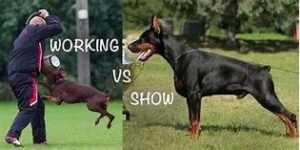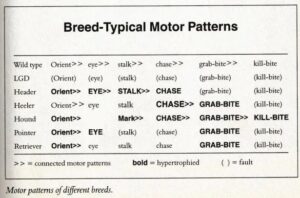
Since the inception of dog registries and the shift from dogs as functional livestock, divisions have occurred. I will not add to the debate that will never end, but will expand on the differences in finding dogs for detection roles in law enforcement. You can train many dogs to perform tasks both simple and complex. However, training alone does not indicate good working aptitude.
First consider this chart we have looked at before from Coppinger and Coppinger’s DOGS- A Startling New Understanding of Canine Origin, Behavior, and Evolution.

We can clearly see we have genetically impacted motor patterns through genetic selection. Some of these motor patterns will yield higher success in law enforcement deployment than others.
Additionally, consider this research: https://link.springer.com/article/10.1186/s40575-015-0017-6
“By focusing on breeds that are derived from a common foundation but then selected for different purposes we have been able to identify a major locus underlying ability of stock dogs, represented by the Australian Working Kelpie, to effectively work in harsh environmental conditions. While stock dog breeders may be selecting primarily for traits such as stock sense and boldness, we reveal that they are favouring breeding from dogs that can focus and continue working despite the presence of environmental hazards and discomforts. This requirement is not needed for dogs accustomed to an urban lifestyle. Australian Kelpies are not usually employed in stock work. They appear to have been subjected to selection that is predominantly based on morphology rather than behaviour.”
So, when considering the working detection dog we must have the following:
The correct size to be functional for the task (able to access odor at height for some functions, the ability to go into tight spaces for other functions)
The correct physicality to do the work (endurance, proprioception, correct energy levels)
The developed and innate characteristics to do the work (motivation, independence, correct motor patterns, responsiveness to training)
The resilience to do the work (the ability to accommodate distraction and environmental pressure without losing motivation)
It is all too easy to see the elite nature of detection dogs responsible to provide our national security. This is why many agencies look at so many dogs to find the best. Not all dogs can be working detection dogs. To raise such a dog, you must be constantly vigilant to allow the dog to develop the traits that make a successful detection dog and elite performer.

